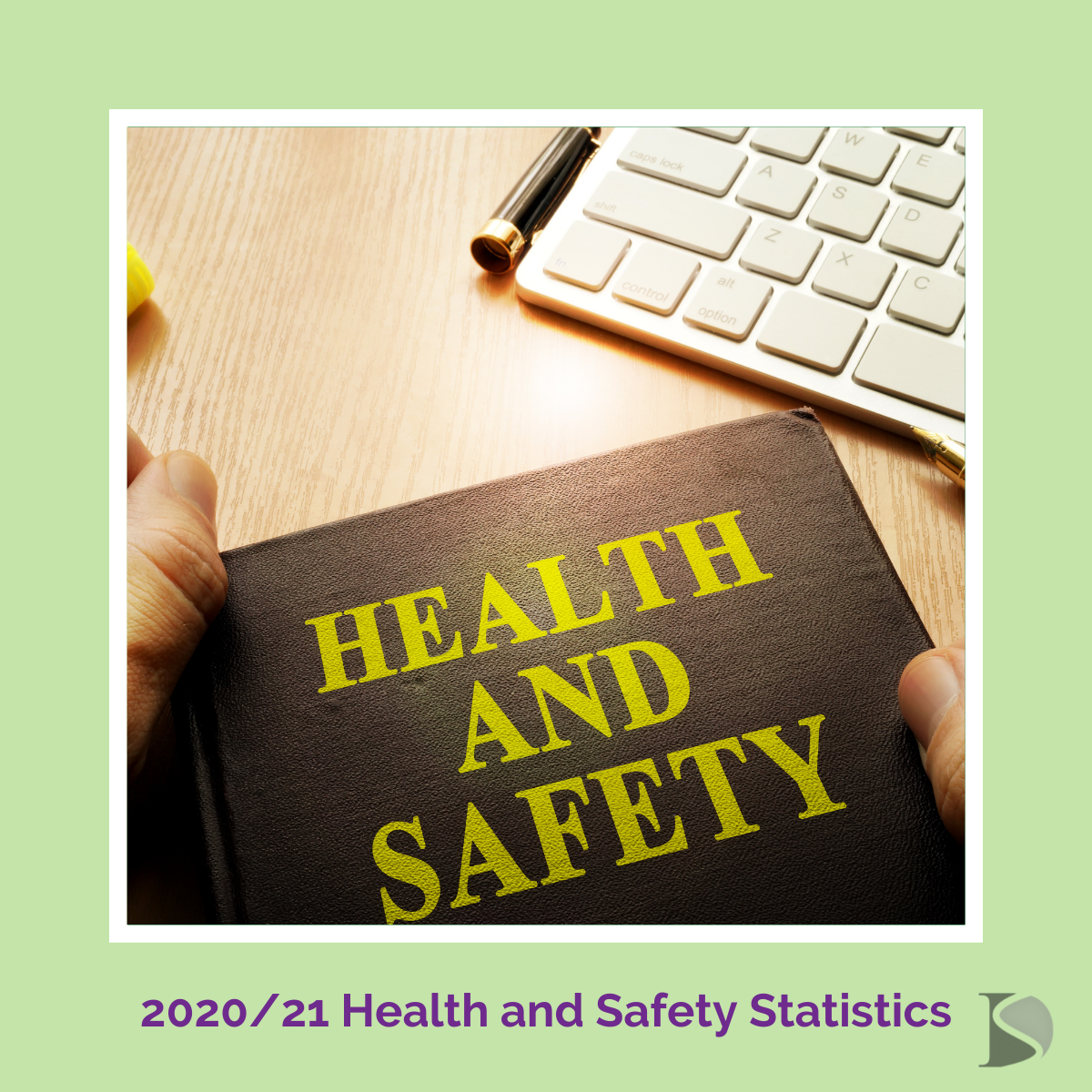In December 2021 the Health and Safety Executive (HSE) released the summary of the 2021 health and safety statistics for the year April 2020 to March 2021. These statistics are of particular interest this year, as they cover the start of the Covid-19 pandemic, and allow us to get an idea of how the changes made during the pandemic may have had an effect on health and safety performance at work.
This article looks as some of the headline statistics, and the full report is available on the HSE website.
Where do the statistics come from?
All of the statistics come from self-reports made either under the RIDDOR regs or gathered from the Labour Force Survey.
RIDDOR reports
The RIDDOR regs (Reporting of Injuries, Diseases and Dangerous Occurrence Regulations 2013) place an duty on employers to report certain accidents, ill-health cases and dangerous occurrences to the HSE. These reports are used in compiling these statistics.
Labour Force Survey
The Labour Force Survey (LFS) is carried out every year by the Office of National Statistics (ONS). This survey samples a random selection of the UK population and asks a wide range of social and economic questions, including health and safety at work related questions. The responses to the LFS are then used by government and public bodies to influence policy thinking and direct resources. More information can be found about the labour force survey on the ONS website.
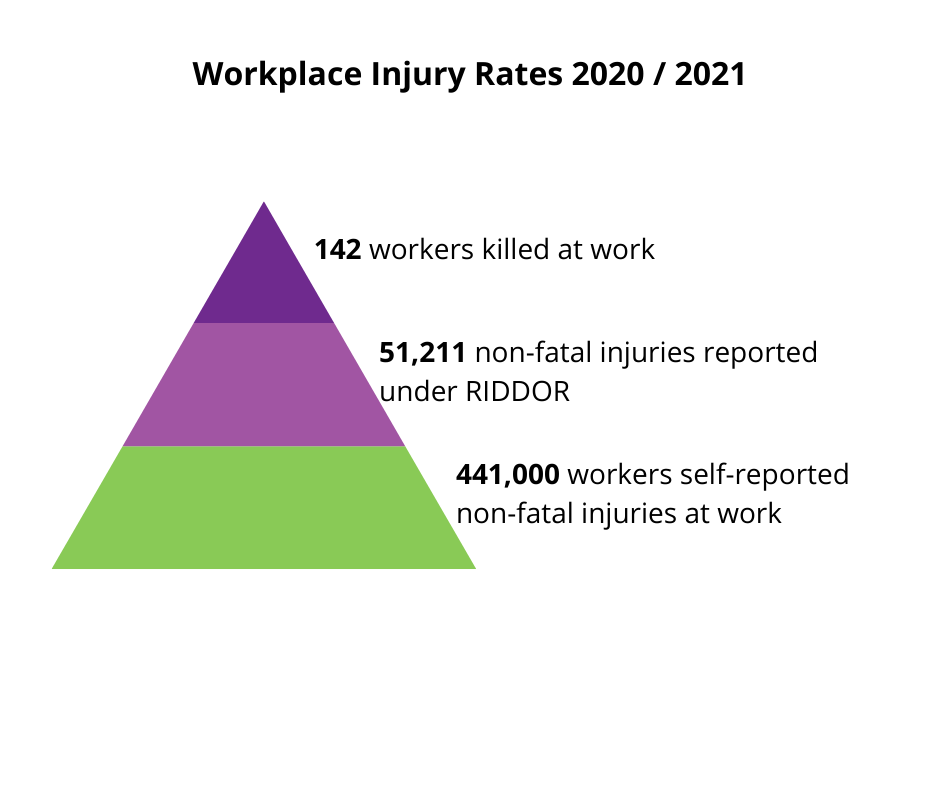
2020/21 Fatalities
There were a total of 142 work related fatalities in 2020/21. This number is roughly in line with the number of fatalities recorded in recent years, with a general downward trend.
In addition to this, there were 60 members of the public killed as a result of work activities in 2020/21.
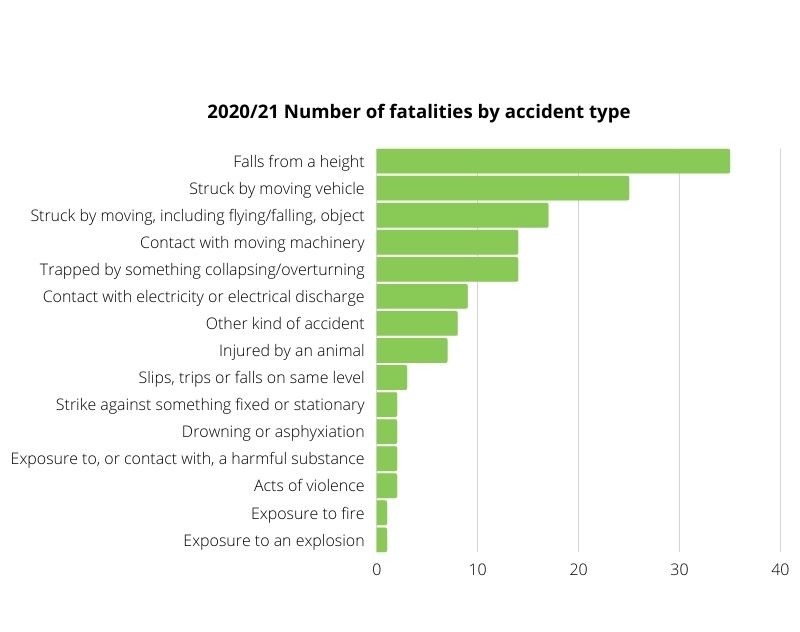
The most common cause of fatal injury were falls from height, with 35 people killed. This has been the leading cause of work related fatalities for a number of years, and means that 3 people a month are killed from falls.
The second and third causes are struck by a moving vehicle (25 people) and struck by a moving object (17 people).
Note that these numbers do not include people at work killed in a road traffic accident.
2020/21 Work-related injuries
There were 51,211 RIDDOR reportable injuries recorded in 2020/21. This number continues to fall year-on-year although there was a sharper rate of decrease in 2020/21.
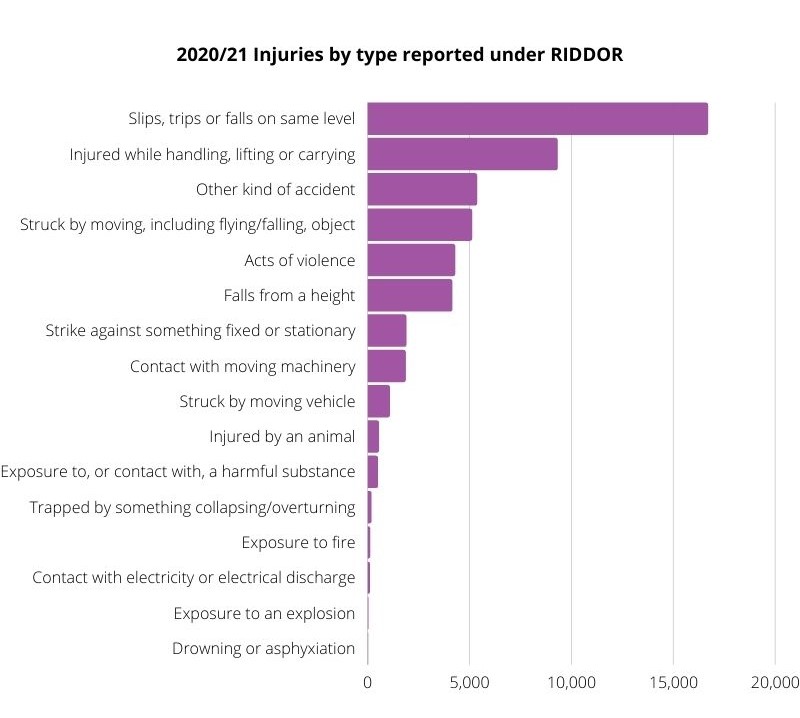
In addition, there were 441,000 self-reported work-related in injuries, as reported in the Labour Force Survey. These break down to 339,000 injuries with up to 7 days absence from work, and 102,000 injuries with over 7 days absence.
2020/21 Work-related ill-health cases
850,000 new work-related ill-health cases were reported in 2020/21. Together with long-standing ill-health cases, this gives a total of 1.7 million workers suffering from work-related ill health.
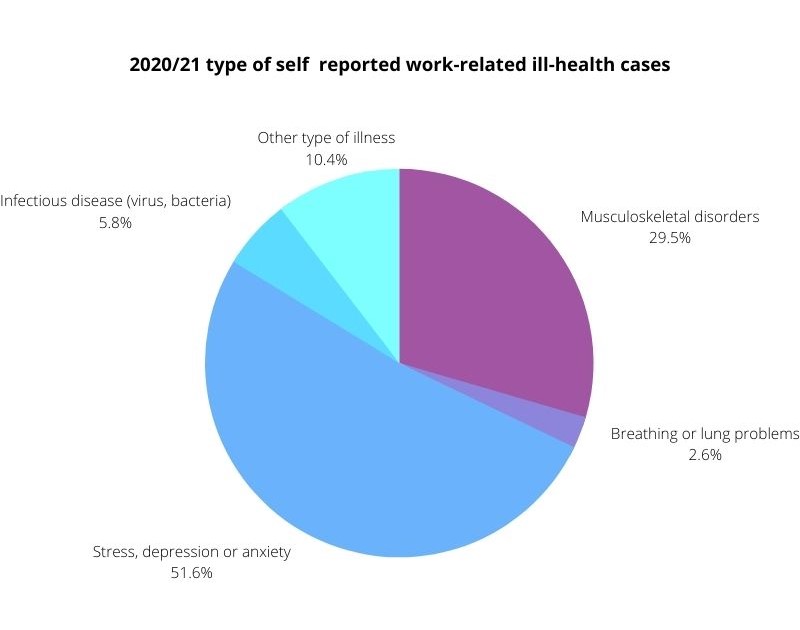
The leading cause of working related ill-health continues to be stress, depression and anxiety; this has been the leading cause for a while, with the rate increasing over the last few years. 451,000 workers reported a new case of work-related stress, depression or anxiety in 2020/21.
Effect of Covid-19 pandemic on health and safety at work
Covid-19 has had a huge impact on the workplace throughout 2020 and 2021, and has no doubt had an impact on health, safety and wellbeing of workers across all sectors of the workforce. It is estimated that 738,000 people were affected by work-related exposure or changes due to the pandemic.
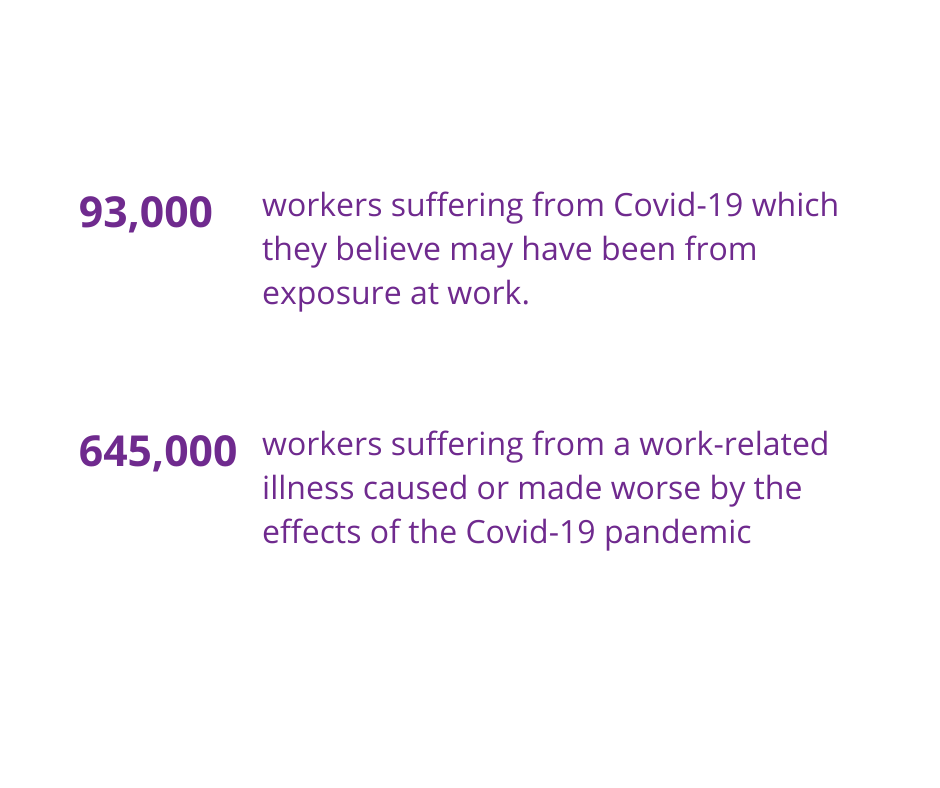
Identifying the work-related statistics around the effect of Covid-19 is challenging, particularly when the virus is so widely in circulation in the population. The Labour Force Survey asked particular questions to estimate the number of people who believed their Covid-19 case was due to workplace exposure, and those who believed that the pandemic and the precautions we had to take (such as furlough, working from home, social isolation) made their existing work related condition worse.
Of the new and long-standing cases of work-related ill health caused or made worse by the effects of the pandemic, 70% of those cases were related to stress, depression or anxiety.
So, what’s the key message to take away?
While great progress has been made in improving workplace safety, there is still a lot of work to be done. Every one of these statistics represents a person who is affected, with the knock-on effect to their family and friends being immeasurable. As employers, we have a duty of care to protect people from work related injuries and ill-health, and we must continue to make improvements where ever we can.
Want help in preventing your people from becoming part of these statistics?

